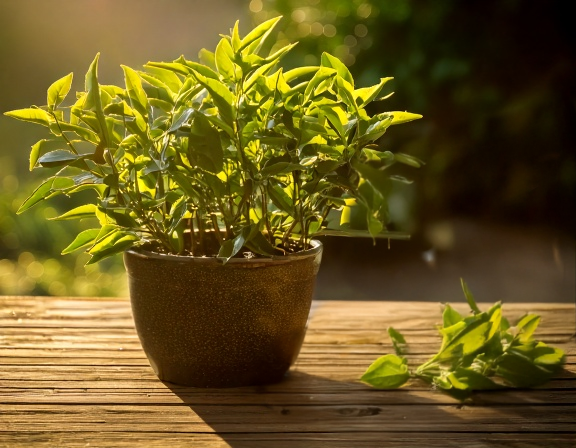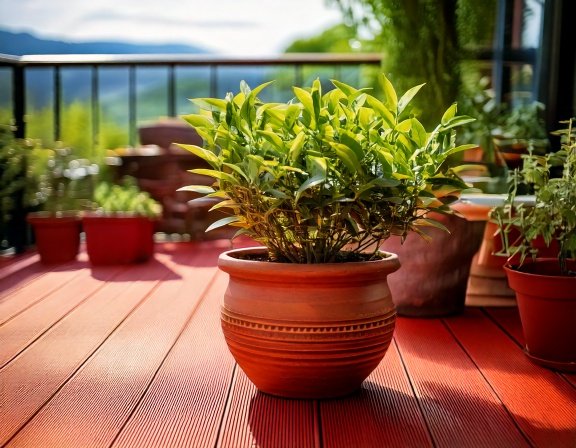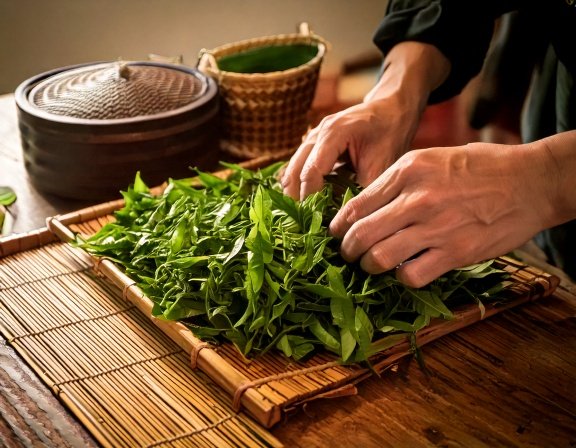Growing Green Tea at Home: Step-by-Step Guide to Harvesting, Brewing & Energizing Your Day
Grow Camellia sinensis on a balcony or in a garden bed, then process your own leaves for a bright, antioxidant-rich cup.

They say in every green leaf, the garden’s energy comes alive. Imagine harvesting your own tea leaves, brewing a cup, and tapping into clean, natural energy straight from your garden. Green tea (Camellia sinensis) is a beloved tonic—rich in antioxidants and gently stimulating. Whether you have a garden bed or just a sunny balcony, you can grow green tea at home!
Why grow green tea?
Freshly processed leaves give a delicate, grassy cup with gentle lift. Plus, the tea shrub is an attractive, evergreen container plant for small spaces. For horticultural background and UK-friendly cultivation tips, see the Royal Horticultural Society’s guidance on the tea plant and “grow your own tea.”
How to Grow Green Tea at Home (Step-by-Step)


- Getting Started: Purchase a healthy Camellia sinensis seedling or start from seed (seedlings give quicker results).
- Soil & Potting: Use acidic, well-draining soil (pH 5.5–6.5 is ideal) and choose a roomy container with drainage. (See also American Camellia Society soil guidance.)
- Light & Climate: Partial sun to bright filtered light; protect from harsh afternoon sun and freezing temps.
- Watering: Keep soil consistently moist, never soggy; mist leaves in dry climates.
- Feeding: Fertilize with azalea/camellia fertilizer every 6 weeks during the growing season.
- Growing Tip: Prune to about waist height to encourage bushier growth and easy harvests.
This herbal recipe is shared for educational purposes only, based on traditional use and available sources. It is not medical advice. Please consult your healthcare provider before use, especially if pregnant, nursing, or on medication.
Harvesting & Making Your Own Green Tea

- When to Harvest: Pluck the newest, tender top leaves (“two leaves and a bud”) in spring and early summer.
- Withering: Spread leaves on a tray in shade for 1–2 hours to reduce surface moisture.
- Steaming: Steam 1–2 minutes to halt oxidation and preserve color and nutrients.
- Rolling: Gently roll leaves by hand to release juices and shape.
- Drying: Air-dry or finish in a low oven (~200°F) for 10–15 minutes until crisp.
Did You Know? Green, black, and oolong teas all come from the same plant—processing makes the difference.
Brewing the Perfect Cup


- Basic brew: Use ~1 tsp fresh or dried leaves per cup. Steep in 170–180°F water for 1–3 minutes (avoid boiling to prevent bitterness).
- Flavor twists: Add lemon, fresh mint, or sliced ginger.
Wellness Benefits
Green tea is rich in catechins (like EGCG), supports metabolism, and provides gentle, sustained energy. (See the WSU guide above for overview notes.)
Supplement Spotlight: Metabolism-Friendly Green Tea Blend

Prefer a ready-to-use option? Explore our review of a daily metabolism blend that includes green tea extract along with complementary botanicals.
Ready to brew wellness at home?
Get our quickstart green tea + herb pairing cheat sheet and weekly garden-to-cup tips.
Subscribe nowFAQ
Can I grow tea indoors? Yes—use a bright window or grow lights and keep humidity moderate. Avoid hot, direct afternoon sun through glass.
What pH soil is best? Aim for slightly acidic, roughly 5.5–6.5. Mix in organic matter for drainage.
How long until first harvest? Expect light harvesting after establishment; best yield comes as shrubs mature.